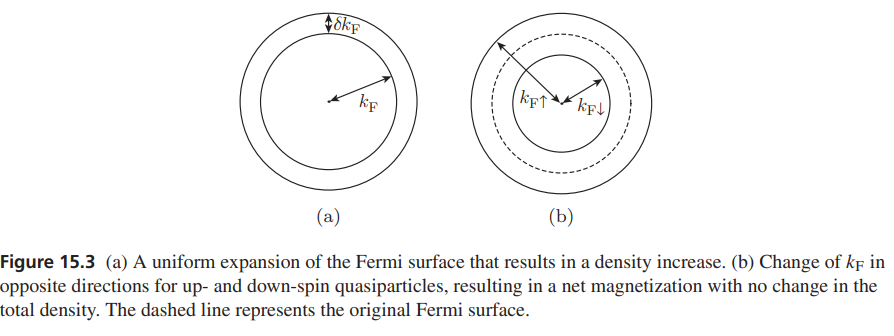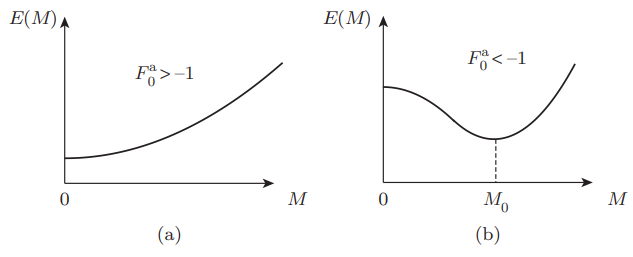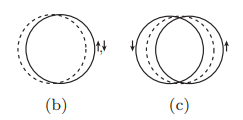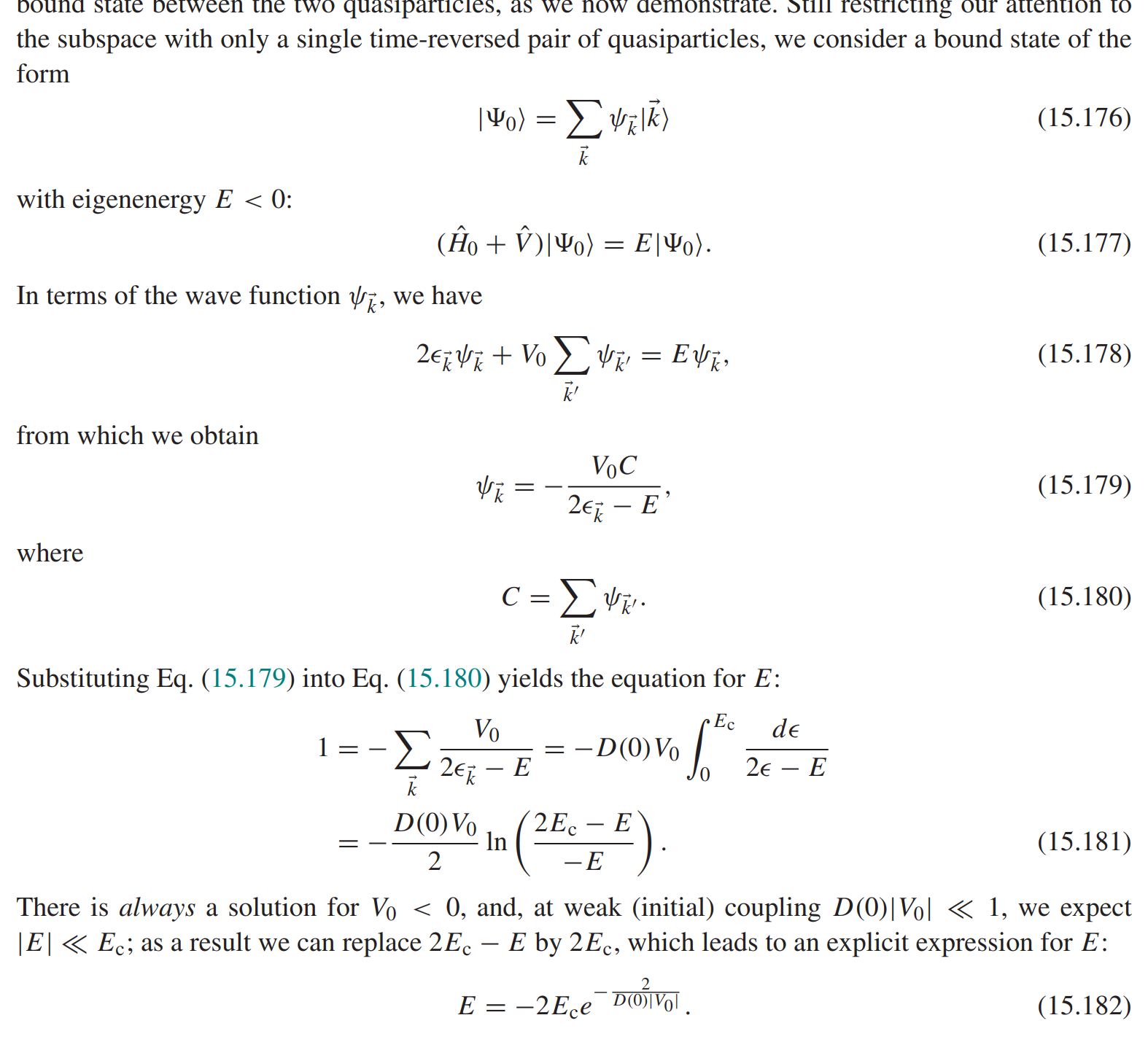Lecture 06
Today
Landau energy functional
Properties of a Fermi liquid
Instabilities
1. Landau's Fermi liquid
Then one can hope to describe all possible change from the ground state by enumerating
Definition:
Note that
The Landau's
The
where
Spin rotational invariance means
so we use the symmetric and antisymmetric (发对称的) combinations
Since
where by virtue of the Luttinger theorem (
So the expansion is written[^2]
2. Physical properties of Fermi liquids
For a theory to be useful, it must lead to experimentally measurable quantities. It is clear that the theory applies when
Isochoric heat capacity
Let's first compute the heat capacity for fixed volume
Using the Sommeld expansion[^2]
So the heat capacity is
This is like the free electron result, except that the density of states has been renormalized by the interaction
so
Measuring the heat capacity will give us information about
Why drop the interaction term in Landau functional? Observe
s.t.
the last line is obtained by separating the summation into
Beyond the mean field,
this correlation contribution can also be dropped if
Isothermal compressibility
from the Gibbs-Duhem relation
which comes from the fact that
So at
So there is factor from change in the density of state, by the factor
Now we need consider the effect of interaction on
Notice that
And the quantity
The renormalized compressibility is
So measuring the compressibility leads to

Spin susceptibility
Collective excitations, transport properties.
3. Fermi liquid instability
FL theory based on adiabatic connection to the free fermion gs.
there can be new gs when the interaction is turned on, arising from Fermi-liquid
Symmetry may be spontaneously (自发地) broken in the phase transition (相变)
Ferromagnetic instability:
divergence of
Let the energy of a non-magnetic system be
where
Now we apply an external field coupled linear with
Then
we see
So,

Pomerrachuk instability: deformation of Fermi surface, when
Ferromagnetic: FS enlarges for one spin, shrinks for the other.
nematic Fermi liquid:


Pairing instability: two quasiparticles
completely local interaction:
consider a singlet pair:
For the Fermi liquid Hamiltonian
Since QP are well defined near the Fermi surface, we introduce a cutoff
This two-body problem is exactly solvable, and the solution is non-perturbative, because there is a discontinuity at
We will do a perturbative RG. Starting at an arbitrary cutoff energy

We find a RG flow equation

RG: repulsive interaction is irrelevant, attraction is relevant
Integrating the RG equation
If
If
That is, the RG breaks down at we get close the FS, because new physics shows up: a bound state!
Cooper problem: Cooper pair

New physics: a pair of electrons on a Fermi sea are unstable against attractive interactions, however weak they may be. This is unlike in the free space, where only finite attraction leads to bound state.
Cooper pair: from the wave function in (15.179), the orbital part of the wavefunction is symmetric under exchange. so the spin part is antisymmetric singlet.
s-wave: The wavefunction has no angular dependence.
The formation of the novel bound states does not stop at two particle level. When a lot of bound pairs form and condense, the FS is destroyed: gapped condensate: superfluid or superconductor.
References and notes
[1] Band mass is the effective mass in the band theory.
[2] We can expand expand any piecewise continuous function in terms of the Legendre (勒让德) polynomial
with
[3] The Sommerfeld expansion is especially useful when evaluating an integral of the form:
In a low-temperature expansion, we find
where the coefficient
Usually, we truncate the expansion at